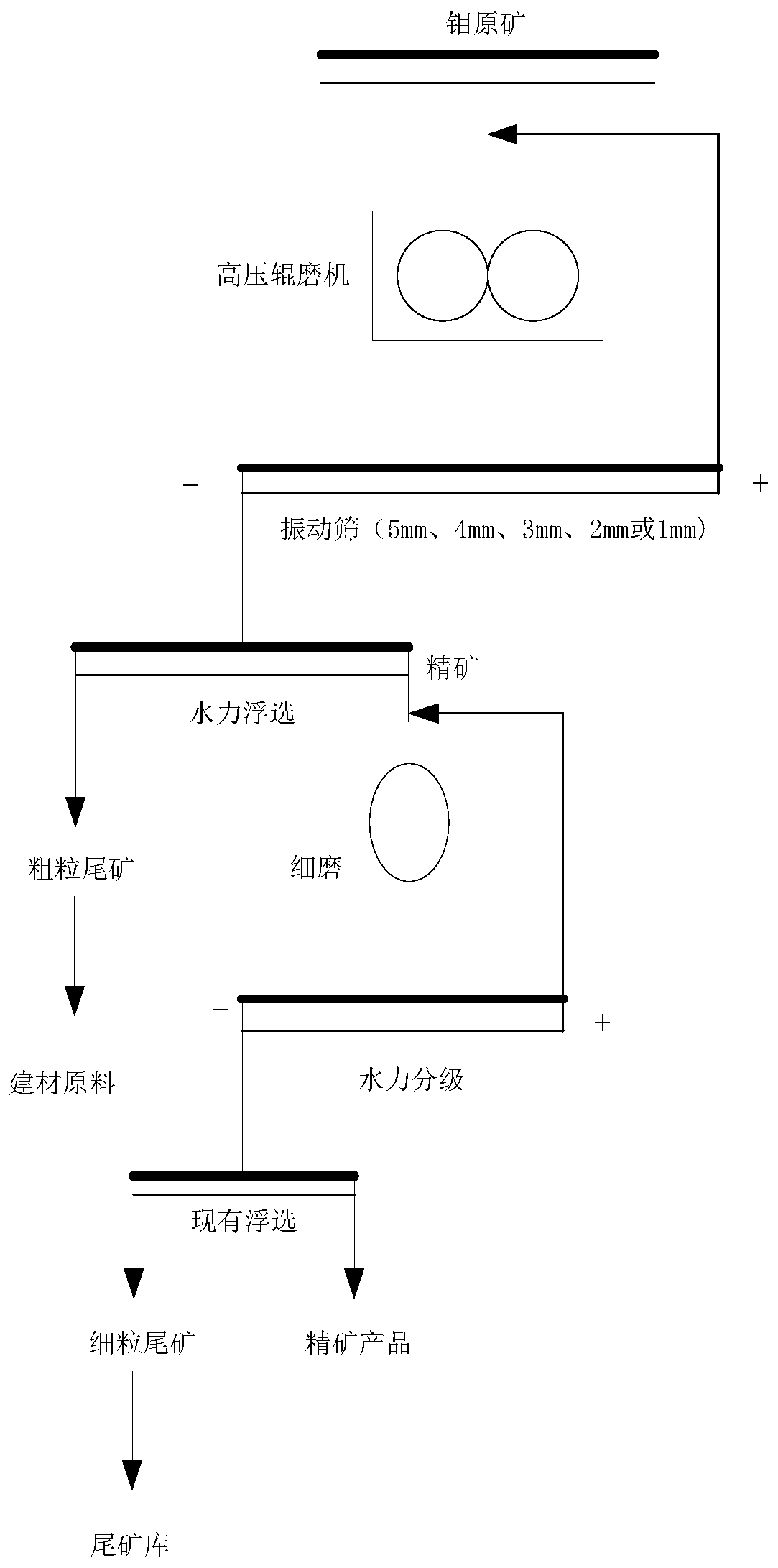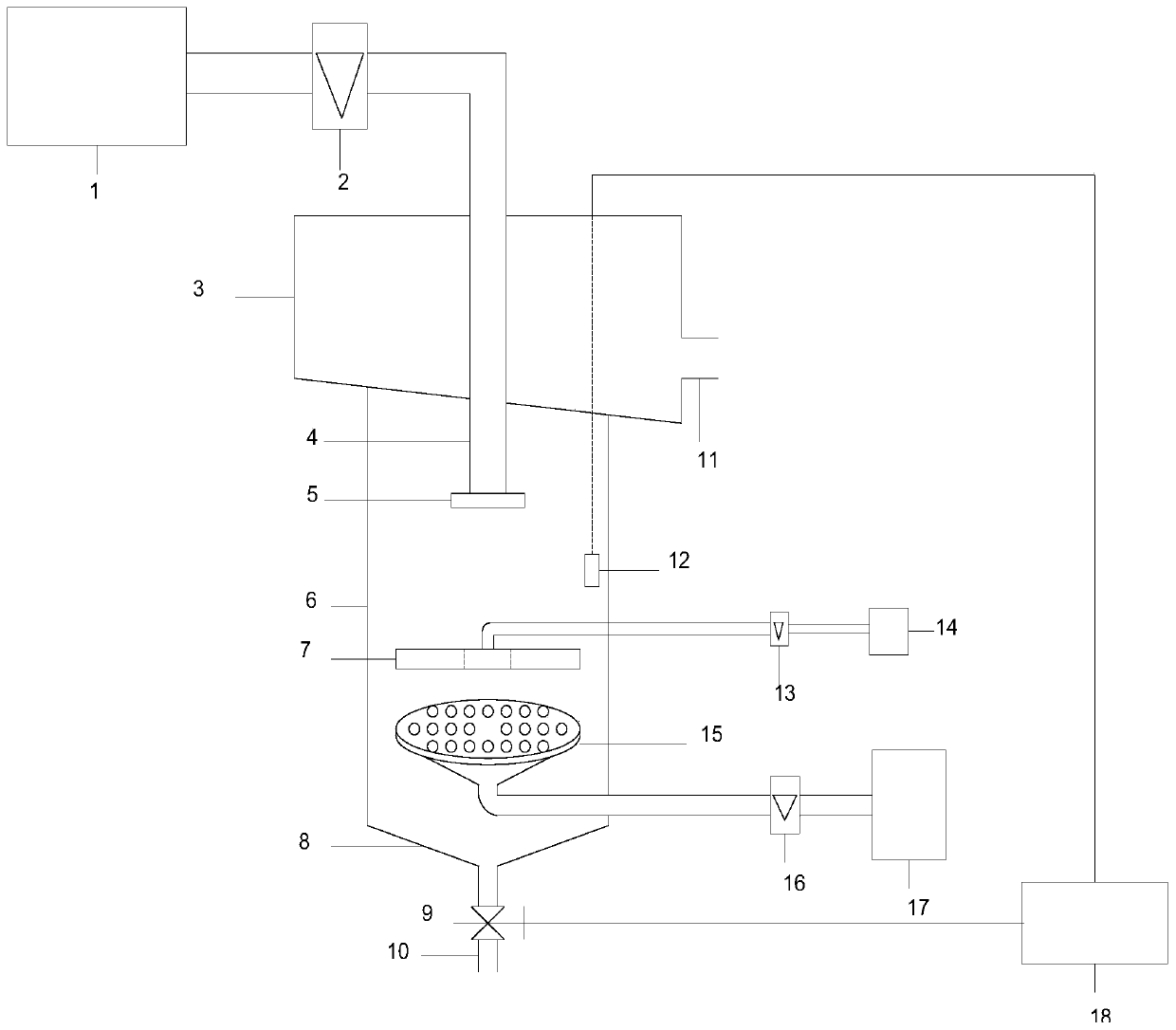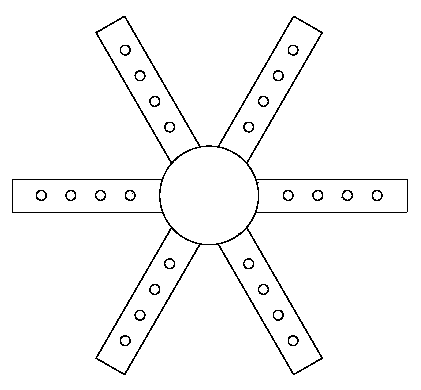Process for reducing non-ferrous metal solid waste source based on hydraulic flotation technology
A non-ferrous metal and flotation technology, applied in flotation, solid separation, wet separation, etc., can solve the problems of difficult tailings dehydration, inability to comprehensively utilize, and high energy consumption of grinding, and achieve the goal of widening the range of selected particle sizes and realizing The effect of large-scale reduction and shortening of the flotation process
- Summary
- Abstract
- Description
- Claims
- Application Information
AI Technical Summary
Problems solved by technology
Method used
Image
Examples
Embodiment example 1
[0025] A source reduction process for bulk non-ferrous metal solid waste based on hydraulic flotation technology, the process includes the following steps:
[0026] Step 1: Feed the raw ore into the high-pressure roller mill for coarse grinding while avoiding over-crushing, and classify through the vibrating screen. The products on the screen return to the high-pressure roller mill section, and the products under the screen enter the hydraulic flotation section.
[0027] Step 2: Mix the under-sieve into the coarse-grained hydraulic flotation device, and discharge the low-grade coarse-grained tailings in advance, and do not enter the subsequent sorting process. After dry stacking and dehydration, it will be used as construction sand, greatly reducing the amount of incoming tailings pond tailings.
[0028] Step 3: hydraulic flotation coarse concentrate enters the fine grinding section and is hydraulically classified, the overflow enters the flotation section, and the underflow r...
PUM
 Login to View More
Login to View More Abstract
Description
Claims
Application Information
 Login to View More
Login to View More - R&D
- Intellectual Property
- Life Sciences
- Materials
- Tech Scout
- Unparalleled Data Quality
- Higher Quality Content
- 60% Fewer Hallucinations
Browse by: Latest US Patents, China's latest patents, Technical Efficacy Thesaurus, Application Domain, Technology Topic, Popular Technical Reports.
© 2025 PatSnap. All rights reserved.Legal|Privacy policy|Modern Slavery Act Transparency Statement|Sitemap|About US| Contact US: help@patsnap.com



